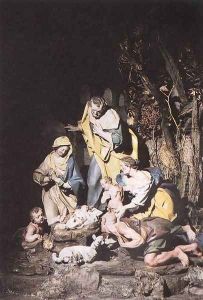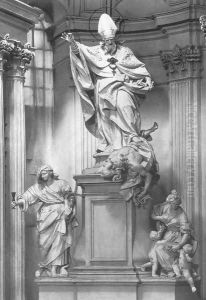Giuseppe Sammartino Paintings
Giuseppe Sanmartino, sometimes spelled Sammartino, was an Italian sculptor known for his skilled craftsmanship in creating emotive and detailed sculptures, primarily in the Rococo style. He was born in 1720 in Naples, which was then part of the Kingdom of Naples, and he lived and worked there throughout his life.
Sanmartino initially trained under his father, who was also a sculptor, and later he continued his studies at the Accademia di Belle Arti in Naples. His education refined his natural talent, and he soon became recognized for his mastery in working with marble. His works often reflected the Rococo sensibilities of the time, characterized by elaborate decoration, intricate details, and a sense of movement.
Sanmartino's most famous work is the 'Veiled Christ' (Cristo velato), completed in 1753 and housed in the Cappella Sansevero, Naples. This remarkable sculpture is celebrated for the astonishingly realistic representation of a dead Christ covered by a thin, transparent shroud, which is actually made of marble but gives the illusion of a lightweight fabric. This masterpiece exemplifies Sanmartino's ability to imbue stone with the softness and subtlety of human flesh and delicate textiles.
Throughout his career, Sanmartino received numerous commissions for religious and secular works, including altarpieces, statues, and funerary monuments. He was also a sought-after teacher and influenced a generation of Neapolitan artists. Despite the acclaim of his contemporaries, Sanmartino's work was largely forgotten until the 20th century when art historians began to reevaluate his contribution to the Rococo art movement and Neapolitan sculpture.
Giuseppe Sanmartino died in 1793, leaving behind a legacy of art that continues to be admired for its technical brilliance and emotional depth. His work remains an important part of the cultural heritage of Naples and an enduring testament to the artistry of the Rococo period.

